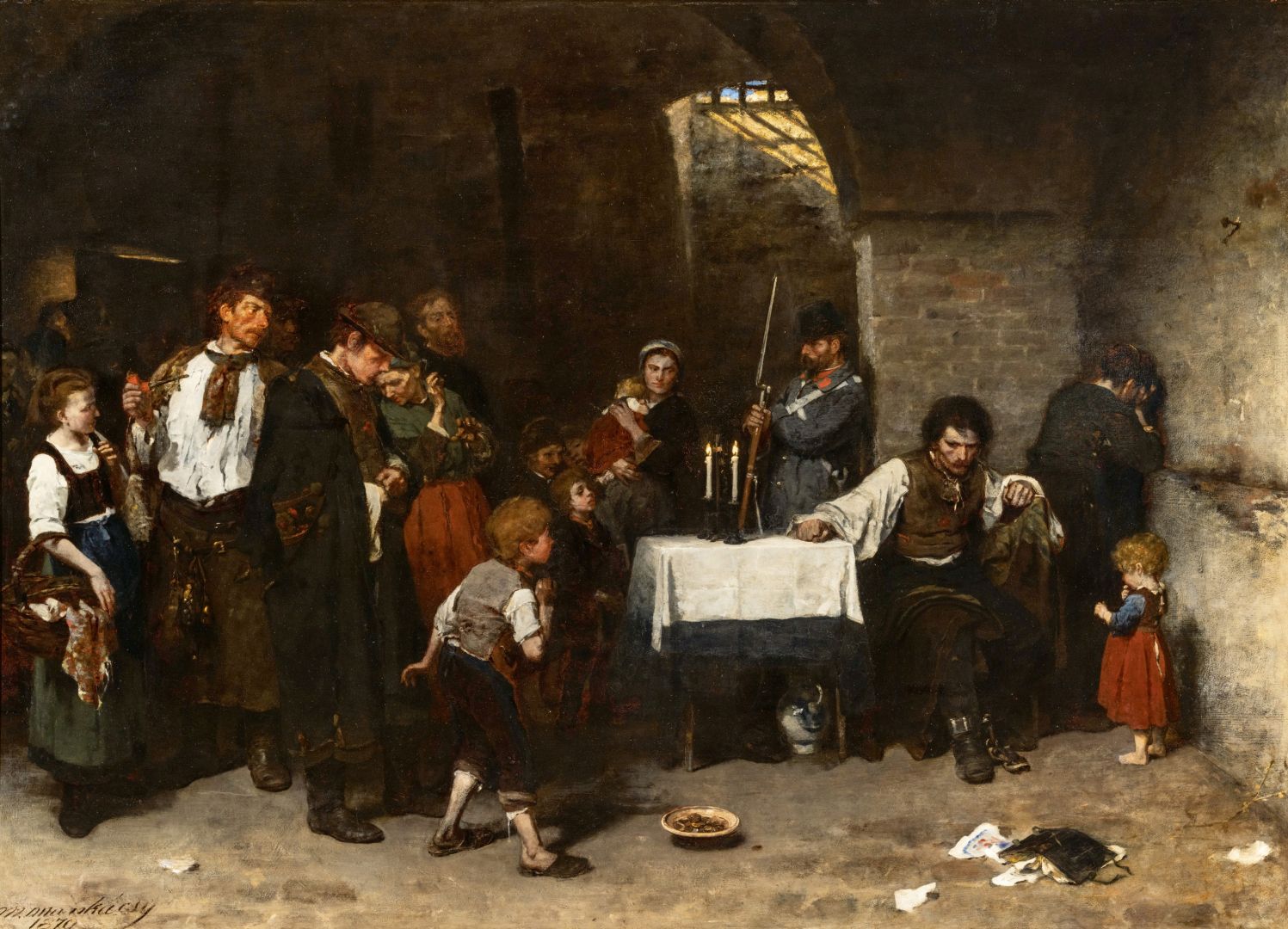Birth of a Legend: First Successes - 2
THE CONDEMNED CELL I
MUNKÁCSY Mihály
(1844–1900)
THE CONDEMNED CELL I
1870
Oil on panel
Museum of Fine Arts – Hungarian National Gallery, Budapest
Inv. no. 65.54T
The Condemned Cell was the first truly significant work by Mihály Munkácsy. It is a realistic depiction of a popular theme of the era, banditry, mixed with romanticism. After the defeat of the War of Independence, many of them became irregulars to avoid conscription into the Austrian Imperial Army. The fugitives, living in the wilderness as outlaws, earned their livelihood by robbing wealthy travellers. Having been captured and sentenced to death, the bandit is visited by relatives and acquaintances before his execution. The facial expressions and the gestures of the figures reflect a whole range of emotions. According to French critic Castagnary, since it is unclear whether the condemned man is truly a criminal or an innocent victim, the resulting uncertainty lends a special emotional resonance to the picture.
Munkácsy achieved his first international success with this painting, winning a gold medal at the Paris Salon. The drama of the painting impressed Gustave Courbet and Wilhelm Leibl, as evidenced by Leibl’s letter of praise, which Munkácsy kept in his wallet for the rest of his life.
